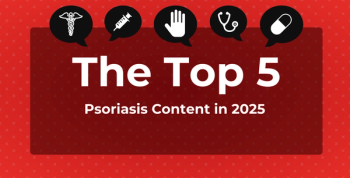
AHRQ Seeks Research Funds for Multiple Chronic Conditions, Opioid Abuse, Volume-to-Value in FY 2016 Budget
The Agency for Healthcare Research and Quality (AHRQ) is a comparatively small part of the federal budget, but its research priorities for FY 2016 affect areas that consume huge sums.
Tucked within President Obama’s massive $3.99 trillion budget proposal are comparatively tiny requests for research funds into some of the most problems in healthcare, which seek answers for things like how to best treat patients with multiple chronic conditions, how to give guidance to primary care physicians facing an epidemic of prescription and opioid drug abuse. There’s even a request to track the effectiveness of the new effort to tie more Medicare payments to value instead of volume.
The Agency for Healthcare Research and Quality (AHRQ), an arm of the US Department of Health and Human Services (HHS), outlined 4 priority areas in its budget request, which appears on the
Improve healthcare quality. This area includes $12 million for an initiative to “optimize care for patients with multiple chronic conditions,” which AHRQ notes represent a growing share of both the population generally (one-fourth) and those in Medicare (two-thirds). Of great importance, two-thirds of all US healthcare spending goes to persons with multiple chronic conditions, which can include diabetes, cardiovascular disease, obesity, metabolic syndrome, or chronic obstructive pulmonary disorder, among many others. According to AHRQ, the initiative seeks to “develop, test and disseminate tools that enhance clinicians’ abilities to develop integrated care plans that fully reflect the factors and circumstances that affect patients’ efforts to manage their health.” Care models that are doing a better job than most will be studied.
The budget also seeks $5 million, including $1 million for an evidence review and $4 million for grants, to identify best practices for combatting prescription drug and opioid abuse and to bring evidence-based treatment into primary practices, especially in rural areas.
Make healthcare safer. This area builds upon current research and provides $76 million for the patient safety portfolio, including $14.5 million for ongoing grants and contracts, which have been focused on safety in hospital settings. Adverse events, including falls, drug events, pressure ulcers and hospital acquired infections have dropped 17%, saving $12 billion and resulting in 50,000 fewer deaths. Going forward, more settings will be added, including nursing homes and primary care, with another $34 million dedicated toward reducing healthcare associated infections.
Increase accessibility. As described by AHRQ, this area focuses on collecting data and evidence of the impact that changes in health insurance coverage have on people: their health and wellbeing, their finances, as well as the broader labor markets, on providers, and on the safety net. The FY 2016 budget provides $68.9 million for the Medical Expenditure Panel Survey, which AHRQ says is “the only national source for comprehensive annual data on how Americans use and pay for medical care.” At a time of increasing change in the payer mix and the delivery of care, this request seeks to collect evidence on the dynamics of these changes.
Improve healthcare affordability, efficiency, and cost transparency. A request of $1.5 million for research would produce evidence on “paying for value,” which was the subject of an HHS initiative last week. AHRQ seeks funds to track the effectiveness, “to identify types of healthcare that are amenable to strong financial incentives.”
Newsletter
Stay ahead of policy, cost, and value—subscribe to AJMC for expert insights at the intersection of clinical care and health economics.








































